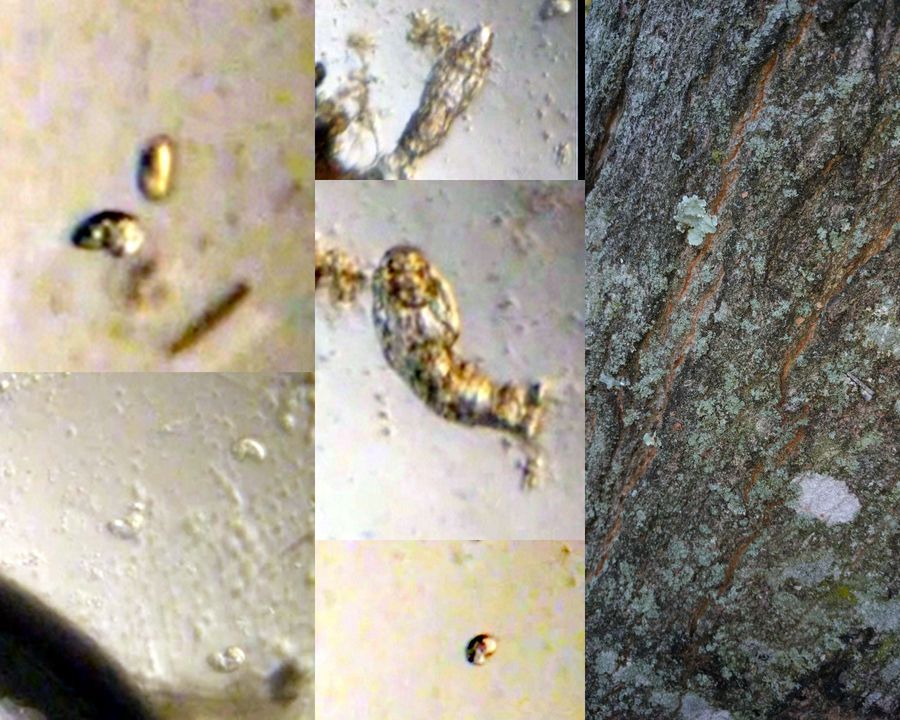Foldscoop 1:3. Long-term Lichen suspensions
 Nov 26, 2016 • 7:47 AM UTC
Nov 26, 2016 • 7:47 AM UTC Unknown Location
Unknown Location 140x Magnification
140x Magnification Microorganisms
Microorganisms
laksiyer
Human observer of life. https://sukshmadarshin.wordpress.com
97posts
1255comments
5locations

Laziness is a good thing; sometimes . Previously I had posted on observing tardigrades, ciliates and nematodes ( 1 , 2 ) in Lichens. It so happened that due to a hundred obstacles that life so often places, I forgot to observe the lichens suspended in mineral water for about two weeks. By this point, the water turned dark brown and wondering if something had grown, I peeked into three such samples that I had set aside. To my utter delight the samples were buzzing with life. Two of them (from independent lichens) were filled with the comma shaped ciliate that I had noticed previously (Ciliate-19782-7-LI) and one had an abundance of rotifers.
In the video below is the star of the post, the comma shaped ciliate that I realize is a member of the Colpoda genus of ciliates. Look at the videos for more details. I suspect this is related to the ciliate that @MaxCoyle saw some time back. There is another ciliate too that I call Ciliate-19984-1-LI in the video.
In the video below is the star of the post, the comma shaped ciliate that I realize is a member of the Colpoda genus of ciliates. Look at the videos for more details. I suspect this is related to the ciliate that @MaxCoyle saw some time back. There is another ciliate too that I call Ciliate-19984-1-LI in the video.
2. Also found along with these was a Tetrahymena-like ciliate (Ciliate-19984-2-LI).
It was also time to call the DC micronauts to join the fun and it was a riot. Each one got their own lichens suspended in water to look for tardigrades and nematodes, and they also had the option to study the explosion of ciliates and rotifers from my samples.
3. Here is a video by DC micronaut Vaish on the sample with many rotifers.
3. Here is a video by DC micronaut Vaish on the sample with many rotifers.
4. It was an intense session with the kids, and we had a lot of fun.

5. Now my laziness knew no bounds as I left the same sample on my table until now (it has been some 6 weeks). The following video is of the sample which had an explosion of Bdelloid rotifers (Rotifer-19984-5-LI) and still is filled with them and the other two ciliates too. However the reason why I am able to get such long-term cultures is seen at the end of the video.
Perhaps after about a couple of weeks, a lot of bacteria start growing in the culture. This is a substrate for ciliates and rotifers to grow. In due course these multi-organism systems reach an equilibrium. These can be modeled by Lotka-Volterra models. For example, here is a simple two-species predator-prey model . With more than two species you can get oscillations, chaos and various equilibrium states. Will post those explorations someday, but here the resources might be determined by the number of bacteria and a simple competition model between the larger eukaryotic species for the resources (bacteria).
BTW, I have successfully sub-cultured Colpoda, but that is for another day. I hope you had a chance to contribute to the exciting foldscope kickstarter campaign to put a microscope in every child’s hand.
This post is open to read and review on The Winnower.
BTW, I have successfully sub-cultured Colpoda, but that is for another day. I hope you had a chance to contribute to the exciting foldscope kickstarter campaign to put a microscope in every child’s hand.
This post is open to read and review on The Winnower.
Sign in to commentNobody has commented yet... Share your thoughts with the author and start the discussion!

 0 Applause
0 Applause 0 Comments
0 Comments_300x300.jpeg)

















